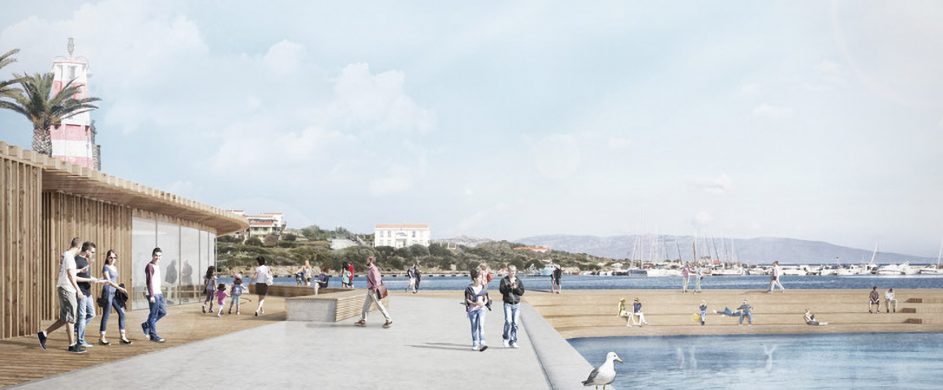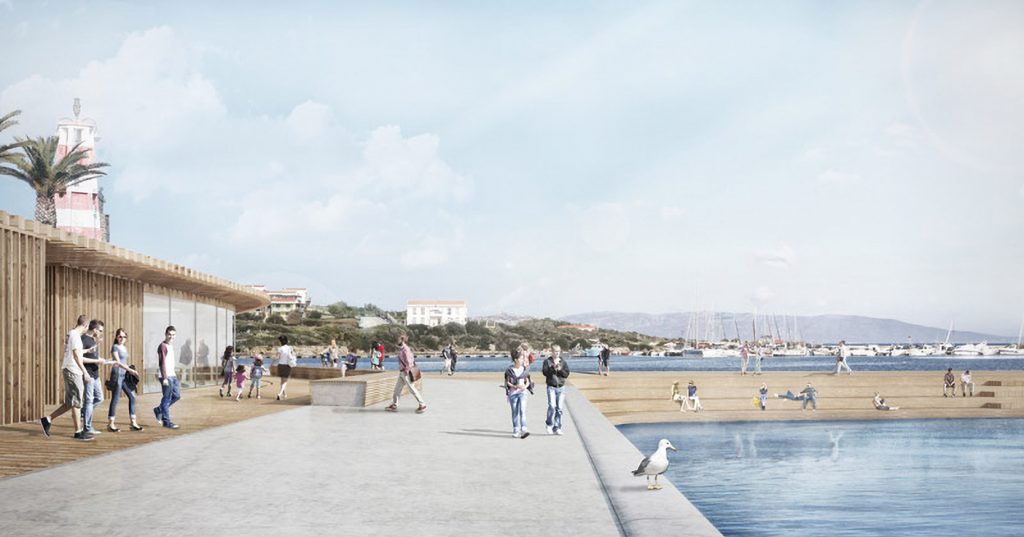Archistart is pleased to dedicate an interview with Spaziozero, a young U35 architecture practice based in Cagliari.
Founded by Lorenzo Ciccu and Simone Langiu in 2016, the practice has stood out over the past two years, winning many recognitions, including the NIB 2018 prize that awards the top 10 Italian under36 architects. Carlo Pisano joined the group as scientific advisor in 2017 and Nicola Melis has been collaborating since 2018. Spaziozero main design themes concern school and recreational construction, social housing and reuse of abandoned areas within the urban context. This variety of themes and scales is based on an approach pursuing the relationship between space and architecture, where the urban setting of the intervention is fundamental in the process, considering architecture as part of history and continuation of a longer route for a city and a landscape.
Archistart believes that Spaziozero story can be taken as a stimulus and example by all those young designers who want to test themselves in the field of public competitions.
Lorenzo and Simone, indeed, start their activity by showing off on the Archistart platform, participating in the 2015 CMR competition, ranking second with RIFUGIO project.
We thank the two architects for satisfying some of our curiosities over their professional career:
///
Archistart è lieta di dedicare una breve intervista a Spaziozero, giovane studio U35 di Cagliari.
Lo studio, fondato da Lorenzo Ciccu e Simone Langiu nel 2016, nel corso degli ultimi due anni si è messo in evidenza conquistando numerosi riconoscimenti tra cui il premio NIB 2018 che valorizza i migliori 10 studi italiani under 36. Carlo Pisano si è unito al gruppo come consulente scientifico nel 2017 e Nicola Melis collabora con lo studio dal 2018. I temi progettuali più ricorrenti di Spaziozero riguardano l’edilizia scolastica e ricreativa, l’housing sociale e il riuso di aree dismesse all’interno del tessuto urbano. Questa varietà di temi e scale è accomunata da un approccio che persegue la relazione fra spazio e architettura, dove fondamentale nel processo risulta essere l’impostazione urbana dell’intervento, con la consapevolezza che l’architettura è parte di una storia e continuazione di un percorso più lungo di una città e di un paesaggio.
Archistart crede che il loro percorso possa essere preso come stimolo e riferimento da parte di tutti quei giovani progettisti che vogliano cimentarsi nel campo dei concorsi pubblici.
Lorenzo e Simone, infatti, iniziano la loro attività mettendosi in mostra sulla piattaforma Archistart partecipando al concorso CMR 2015 classificandosi secondi con il progetto RIFUGIO.
Un ringraziamento ai due progettisti che si sono messi a disposizione a rispondere ad alcune curiosità:

We can say that among your first adventures together there is CMR 2015 on our portal: which were the implications of that experience?
Carpineto competition in 2015 was our second contest together and our first prize as a group. For this reason, we are particularly fond of this project, though small in scale. Moreover, the visibility given by the award allowed us to start several collaborations. Some are still ongoing, like the one with Alvisi Kirimoto, architecture practice based in Rome for which Simone continues to produce images for competitions and private assignments.
///
Il concorso del 2015 per Carpineto è stato il nostro secondo concorso e il nostro primo premio come gruppo. Per questa ragione siamo particolarmente affezionati a questo progetto, seppur piccolo nella scala. La visibilità data dal premio ci ha permesso inoltre di iniziare varie collaborazioni alcune delle quali continuano tuttora. Fra queste quella con lo studio romano Alvisi Kirimoto per il quale Simone continua a produrre immagini per concorsi e incarichi privati.
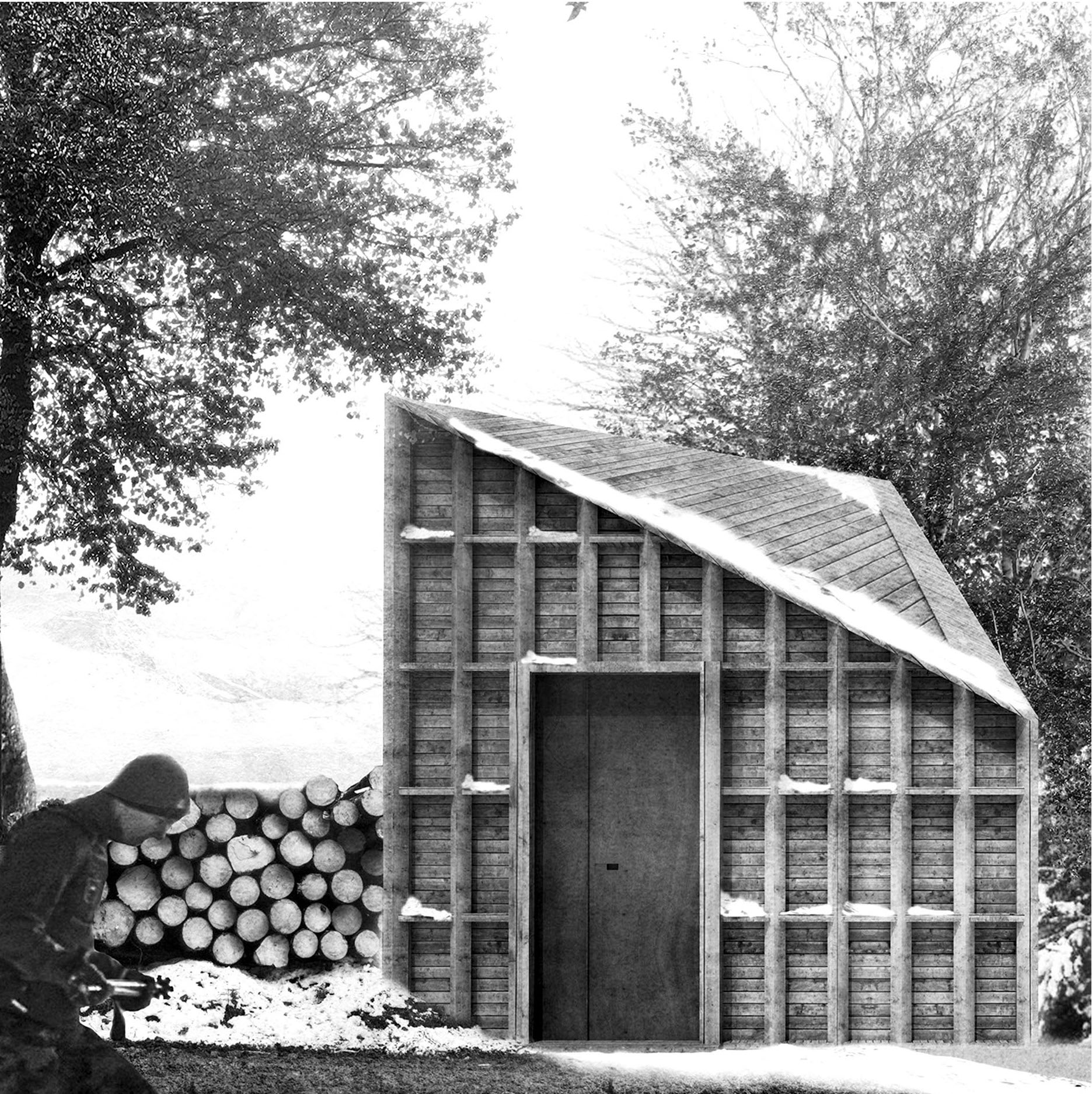
You are young but we bet there is already a lot to tell: a funny story, an odd particular, a mishap related to one of your first works or deliveries.
Well, we admit that there hasn’t been a commission so far in which there hasn’t been a small mishap! But we say this with optimism, aware that it is part of the project path and of our professional growth. In particular, recently, in a restricted competition we participated in, our work seems to have been so exhaustive that, after the winning, the client has informed us he no longer needs our support for the next phases. Fortunately, the story has not ended yet and recently there’ve been some positive signals. Since then we have learned it’s important to be synthetic in the presentation and above all not to produce more material than what is useful to communicate the project idea.
///
Be’, dobbiamo ammettere che finora non c’è stato un lavoro nel quale non ci sia stata una piccola sventura! Lo diciamo con una certa positività però, consapevoli che fa parte del percorso del progetto e della nostra crescita professionale. In particolare recentemente su un concorso ristretto al quale abbiamo partecipato, il nostro lavoro pare sia risultato tanto approfondito che il cliente dopo la vittoria ci ha comunicato di non avere più bisogno del nostro supporto per le fasi successive. La vicenda fortunatamente non si è ancora conclusa e recentemente c’è stato qualche segnale positivo. Da allora abbiamo imparato ad essere sintetici nella presentazione e soprattutto a non produrre più materiale di quello utile alla comunicazione del progetto.
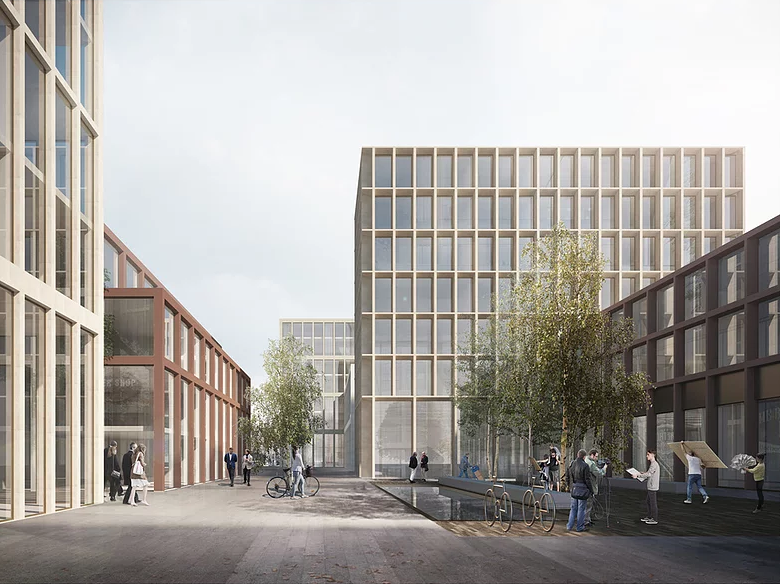
With deserved merits, you base most of your activity on public competitions. That’s quite the dream of many architecture students for their future careers. A piece of advice that you would give to all the students who are about to complete the university and want to start over a similar path? Being an architect is like you have always imagined on the university desks?
Before starting to join contests we were through a long journey made of collaborations and experiences both in Italy and abroad. This gave us the opportunity on one hand to create our own personal vision of designing a project and how doing competitions, on the other hand, to build up a good network of contacts. Therefore a piece of advice would be to build your own network, coz most of the times competitions are not made and not won alone. The image of the architect who wins the architectural competition and deals alone with the realization is very far from reality. And this is good because it will be the sum of these figures and professionals to make the work raise and to ensure the final quality of the project.
///
Prima di iniziare a fare concorsi abbiamo avuto un lungo percorso fatto di collaborazioni e esperienze sia in Italia che all’estero. Questo da un lato ci ha permesso di costruire una personale visione del progetto e del modo di fare concorsi, e dall’altro quello di creare una buona rete di contatti. Il consiglio potrebbe essere dunque quello di costruire la vostra rete perché i concorsi il più delle volte non si fanno e non si vincono da soli. La visione dell’architetto che vince il concorso di architettura e da solo arriva alla realizzazione è molto lontana dalla realtà. E questa è una fortuna perché sarà la somma di queste figure e professionalità ad arricchire il lavoro e garantire la qualità finale del progetto.
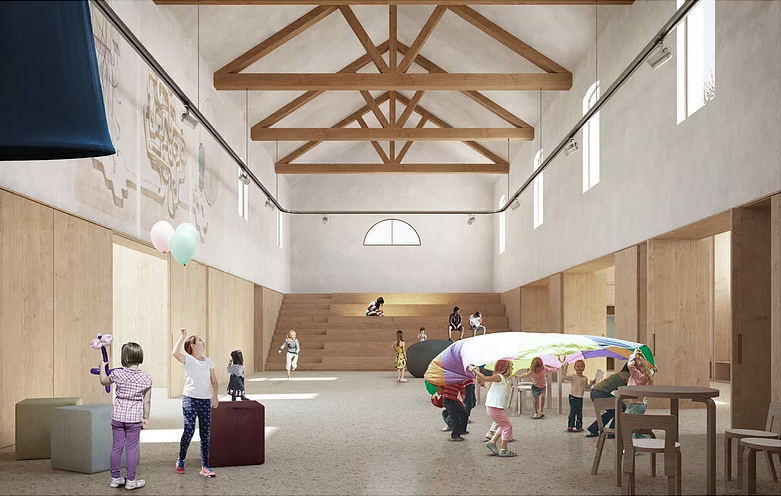
Who is reading surely will be wondering what are the secrets to win a competition: are there some elements that you think are essential and how much a good graphic representation a good ranking nowadays?
We spend so much time on the urban setting of the proposal. It happened to us to start competitions and abandon them even after weeks of work because no solution could convince us. In a competition it is often a matter of telling a story and if the beginning is wrong, it will be difficult for the reader to come to a conclusion.
Also, we tend to be very pragmatic both in architectural choices and in the presentation of the proposal. Once the project course is tracked and the atmosphere we want to communicate is clear to us, we happen to close the competition in a few days. In this sense, good graphics and communication skills are important. However, these are just some of the factors that determine the outcome of the proposal, just like writing is important for the success of a novel as much as its plot.
///
Dedichiamo tanto tempo all’impostazione urbana della proposta. Ci è capitato di iniziare concorsi e abbandonarli anche dopo settimane di lavoro perché nessuna soluzione riusciva a convincerci. Nel concorso si tratta spesso di raccontare una storia e se si sbaglia l’inizio, difficilmente chi legge arriverà alla conclusione.
Tendiamo inoltre a essere molto pragmatici tanto nelle scelte architettoniche quanto nella presentazione della proposta. Una volta che la traiettoria del progetto viene tracciata e l’atmosfera che vogliamo comunicare ci è chiara, ci capita di chiudere il concorso in pochi giorni. In questo senso una buona resa grafica e capacità comunicativa è importante. Sono però solo alcuni dei fattori che determinano l’esito della proposta, così come ad esempio una buona scrittura è importante per il successo di un romanzo tanto quanto la sua trama.

